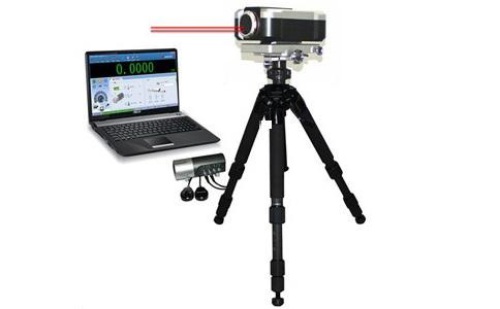
Introduction: Modern laser interferometry developed on the basis of almost all human knowledge of optics. Compared with ordinary light sources, lasers have some unique properties: good monochromaticity, good coherence, strong directionality, and high brightness. The laser interferometer is a universal length measurement that uses the Michelson interferometer system to measure the displacement of the laser wavelength. It is widely used in various fields and has become an important tool for the human cognitive world.
In 1604, J. Kepler wrote an optical work, stating that the intensity of light is inversely proportional to the square of the distance to the light source. He published "Refractive Optics" in 1611.
In 1801, Thomas Young used the double-slit experiment to demonstrate the phenomenon of light interference, the famous Young's double-slit experiment.
In 1881 Michelson (Albert. A. Michelson) designed a famous experiment to measure "Ether" drift. Of course, no drift was measured, which led to the bursting of the etheric theory and the birth of the theory of relativity. It was used for the first time in the interferometer and compared the cadmium red line with the international meter. It is because of his work that later the wavelength of light was used to define "meter." He won the Nobel Prize in 1907 for his work in precision optics, spectroscopy, and metrology.
In 1960, Maiman successfully developed the first ruby ​​laser, and began a new era of rapid development of optical technology. Since then, laser interferometry has been widely used in fields such as length, angle, microtopography, rotation speed, and spectrum, and has been integrated with microelectronics and computer technology to become a modern interferometer.
1982 G. Binning and H. Rohrer developed a scanning tunneling microscope. In 1986, he invented an atomic force microscope. In 1986, he received the Nobel Prize. Since then, a new era of interferometers to nanometer, sub-nanometer resolution and precision has begun.
Due to the excellent temporal coherence of the laser, various laser interferometers have been developed since its inception: single-frequency laser interferometers, dual-frequency laser interferometers, semiconductor laser interferometers, Fabry-Perot (FP) interferences Instrument, X-ray interferometer and so on.
The laser interferometer is one of the most successful applications of lasers in the field of metrology. The use of optical interference to achieve measurement, with non-contact, non-destructive testing features, has been widely used in various fields.
The SJ6000 laser interferometer adopts imported high-stabilization helium-needed lasers, dual longitudinal mode thermal stabilization technology, multi-parameter environmental compensation technology, and high-speed digital signal processing systems. Through the combination of different optical components, linearity is achieved. Angle, straightness, perpendicularity, flatness, and other geometric quantities detected. Linear measurement accuracy: ±0.5ppm, laser frequency stabilization accuracy: 0.05ppm.
Source: Shenzhen Zhongtu Instrument Technology Co., Ltd.
We have supplied our Lighting poles to Australia, Columbia, England, Kuwait, Iraq, Philippines, Pakistan and etc.
Our Lighting poles are made from quality sheet through bending, forming, automatic welding and hot galvanization. We can reach one-run machining length of 14m and can bend sheet of thickness up to 45mm. We adopt advanced welding procedures, automatically weld main joints and reach rank-II welding quality.
Lighting Pole, Transmission Line Pole, Solar Lighting Pole, Single Arm Lighting Pole
Jiangsu Xinjinlei Steel Industry Co., Ltd. , https://www.steel-pole.com